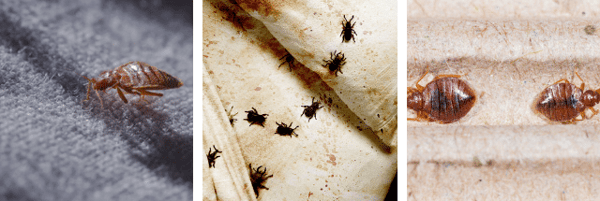There are several times during the year that Massachusetts residents make plans to travel, whether in-state or out, or even abroad. Holidays, school vacations, time off work, or just because the weather finally turns—the call of a break from reality is a hard one to ignore. Unfortunately for us, one of the most feared pests out there also benefits from travel season: bed bugs. 
The mere mention of these sneaky biting critters is enough to make a person itch, and deservedly so: they only come out at night, they feed on blood, they can be difficult to get rid of, and literally anyone can get them. They’ve certainly earned their bad rap over their thousands of years in existence and they don’t seem to be going anywhere. When traveling, no matter the distance, it’s wise to know how to avoid bringing home any unwanted souvenirs.
Bed bugs are notorious hitchhikers, without even knowing it. They do not fly and are not accomplished jumpers, so they inadvertently travel in the luggage of those unfortunate enough to come in contact. In fact, this is the #1 reason for the spread of bed bugs. They can be picked up in hotel rooms, on public transportation, in theater seats, airports, clothing and furniture (new or used), even a friend or family member’s home.
Now, before you talk yourself into cancelling your travel plans, there are ways to avoid becoming part of the bed bug tourism industry:
- Be selective about your luggage. Bed bugs love tight spots and dark nooks and crannies. Bedding, towels, or pillows folded in a cozy suitcase is prime real estate. If you absolutely must carry these items, consider packing them in sealed plastic bags.
- Pack clothing in plastic bags. Speaking of plastic bags, seal your clothing as well. Bed bugs can hook their feet onto the fabric and settle in for the ride. Bonus: Helps with organization!
- Don’t put your luggage on the floor. At least wait until you’ve inspected your space (we’ll cover that in a minute). Leave it in the car, use the luggage rack, or even place it in the bathtub until you’re sure you’re clear.
- Learn how to inspect. You want to inspect your bedding for signs of activity such as blood spots, shed light brown skins, or the obvious live bed bug. Carefully pull back the bedding and any mattress pads or covers. Check all corners and seams as well as along headboard for evidence of activity. Inspect curtains, closets, furniture, and inside drawers. If you find any indication of a bed bug problem, report it right away.
- Be aware of your body. Keep an eye out for any welts or red spots that may be bug bites.
- Upon returning home: Inspect your suitcases before going inside. Wash all clothing or bedding in hot water (depending on material). Continue to monitor your body.
If you find, heaven forbid, that you’ve somehow managed to bring unwelcome visitors home with you, or if you’re not sure and need a professional eye, call or email Burgess Pest Management right away. A bed bug infestation will only get worse if left untreated. It is never advisable to use over-the-counter products—our bed bug specialists can recommend the best treatment method for your home.


